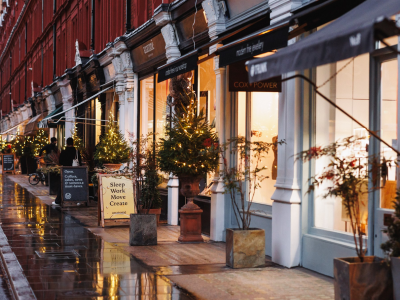Amid a Hampshire landscape of ancient forests and protected parkland, a handsome mansion called Luckhurst could have commanded its sprawling woodland site for centuries. Except that this 14,000-square-foot house, set in 31 acres of private lawns and woodland, is a behemoth of a new build. A lockdown project that parades all the grandeur and pleasing proportions of a Georgian mansion, with none of the leaky roofs or rattling windows that come with the real thing.
The Rise of New-Build Heritage Mansions
24th November 2025
If you love period properties but not the idiosyncracies they come with, it might be time to consider new-build heritage mansions.

“I have lots of friends with original Georgian houses that cost a fortune to heat and they can’t do much about it as their homes are often listed,” comments Luckhurst’s owner, Lex Lutzus, a 44-year-old film producer, who — with Laburnum Associates, developers of grand recreations of heritage homes — has designed a house that’s so airtight, she rarely needs to switch on the heating.

Lutzus calls it “a listed house of the future.” It’s the place she longed for when, tired of shuttling between homes in London and LA, she wanted somewhere with space for her two children “to play and grow.” But her property hunt in peak escape-to-the-country 2020 yielded nothing but “ridiculous” prices. Instead, she bought this site, which had housed a pig farm, with planning permission for several different styles of properties, including a grand 18th-century-style mansion.

It hasn’t all been a picture of Regency glamour. She and her children, then aged eight and seven, lived in a static caravan on the site for the first 10 months until they could move into the black timber Cape Cod-style
four-bedroom guest lodge in the grounds.
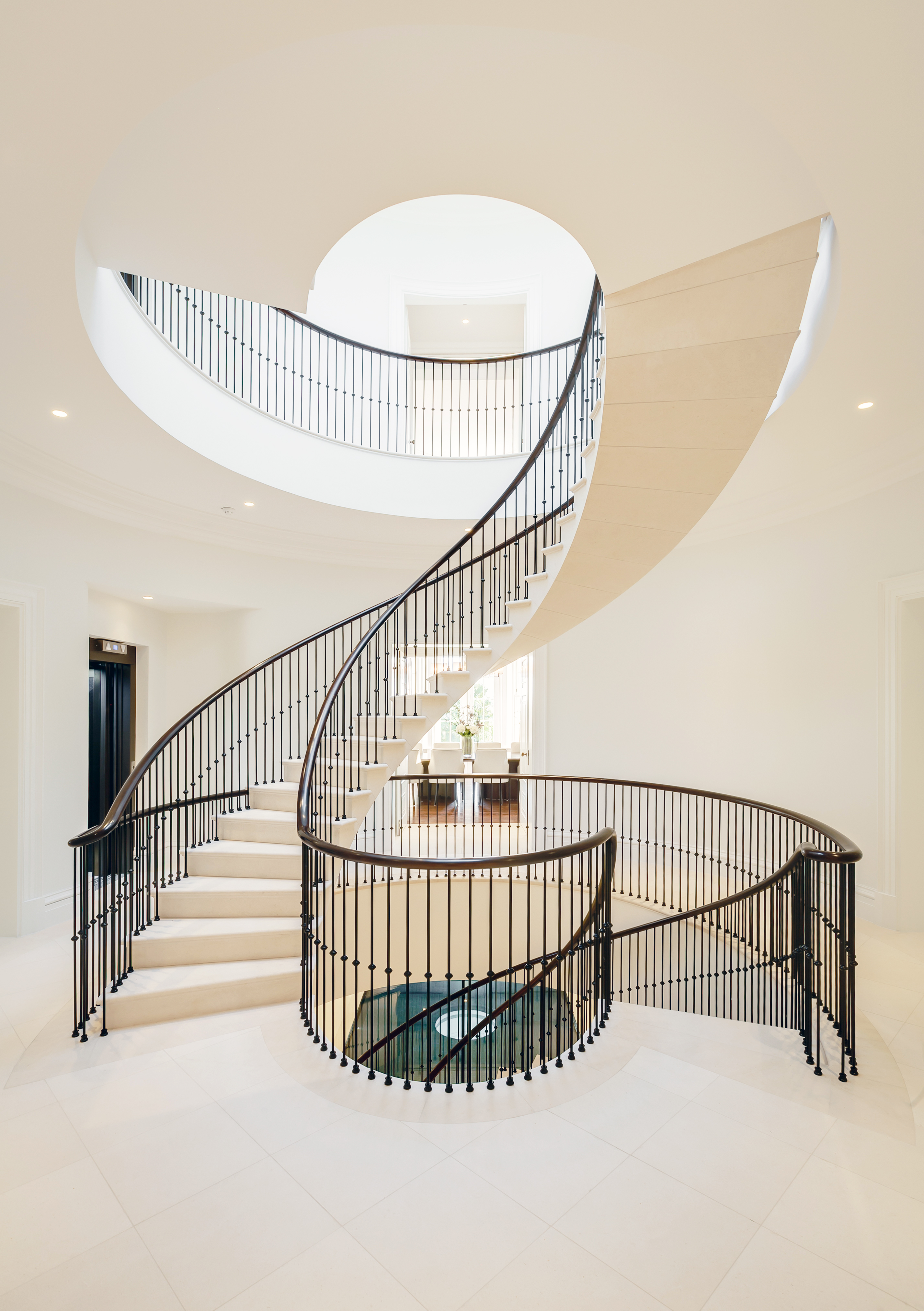
But the resulting mansion is extraordinary, featuring seven bedrooms, six reception rooms and a central staircase that sweeps into a huge entrance hall. Its classic Georgian features, such as high ceilings and perfectly proportioned fenestration, sit seamlessly alongside cool, contemporary design, which includes a mermaid-themed bathroom for Lutzus’s daughter, with a sink made from a huge shell, and a home cinema with blackened walls and ceiling.

Lutzus also wanted great views when she is washing up, so the kitchen, typically relegated to the basement in such homes, has been given a prime spot in a huge side extension where daylight pours in from the roof and sides, and rural views go on to infinity.
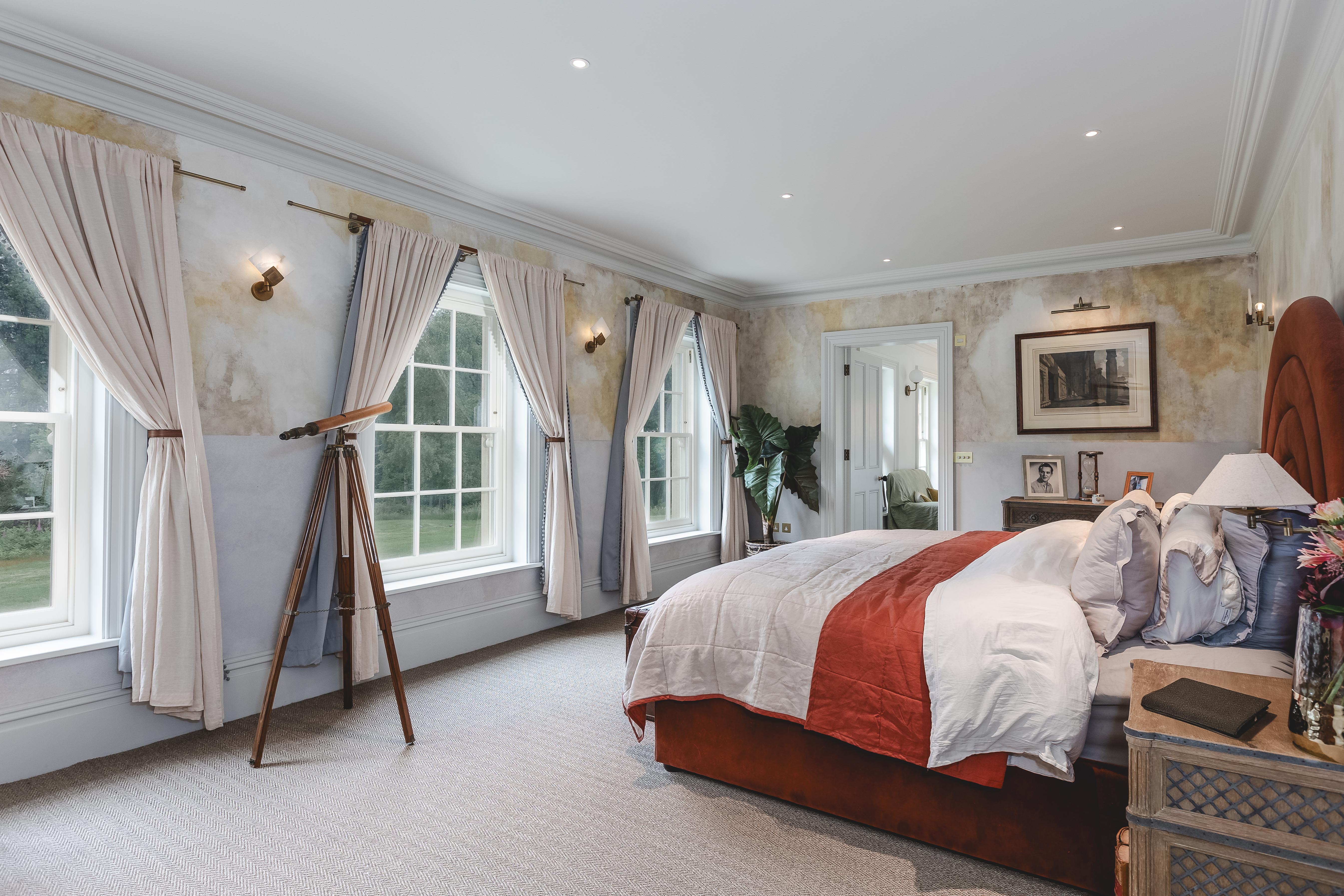
So what is it like to live in a house befitting an 18th-century aristocrat? “It doesn’t feel as large as it looks,” insists Lutzus, who has put Luckhurst on the market for offers over £10m through Knight Frank due to a change in her personal circumstances. “We designed it with lots of interconnecting spaces and wide corridors to avoid it feeling like a rabbit warren. The big atrium means that even from the upstairs bedrooms, you can hear someone in the kitchen, so it feels cosy. And we only really use the kitchen, the cinema and our bedrooms. The rest of the house is only used when guests come.”

It’s the architectural equivalent, perhaps, of having eyes bigger than your belly — wanting a trophy mansion of which you will only ever use a fraction. But today’s high-net-worth buyers in the Home Counties want to have their cake and eat it. They love the charm of old and the convenience of new: Palladian columns and a Pilates reformer; Georgian symmetry with comfort cooling.
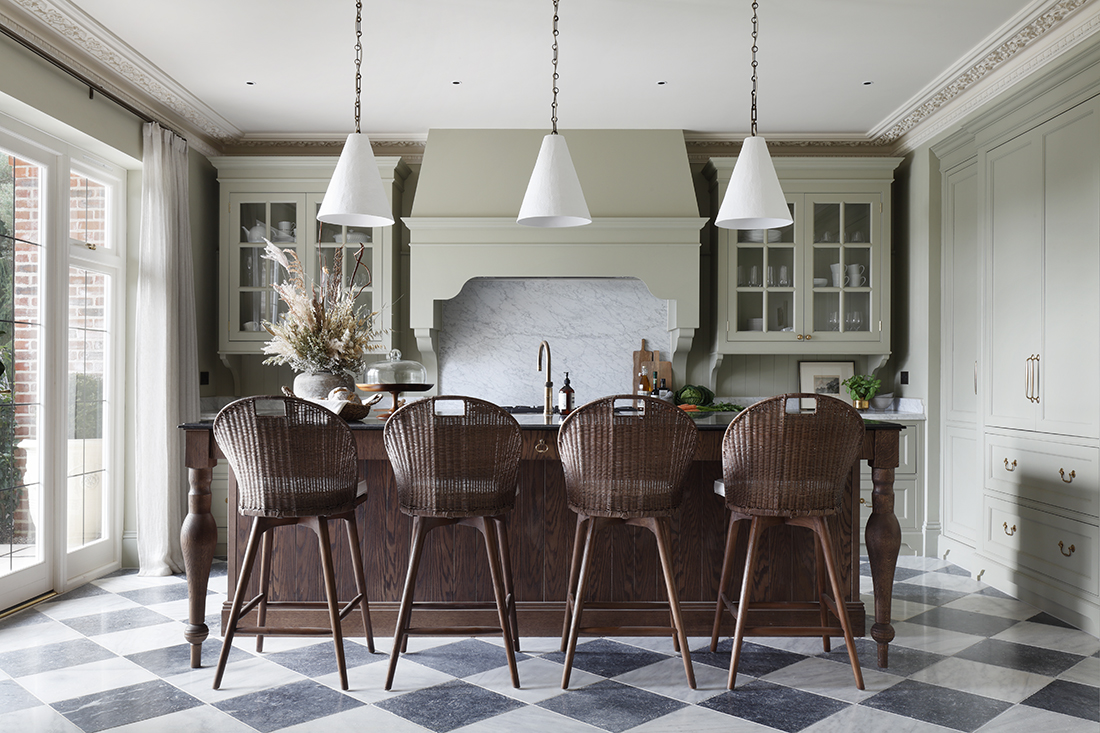
Modern incarnations of Tudor, Edwardian, modernist and Art Deco architecture make the odd appearance. Take Beechwood Manor in Henley-on-Thames: its five apartments priced from £1.4m through Hamptons International are set in a new Tudor-style manor house surrounded by ancient pines. But some of the modern must-haves, such as the Quooker taps, might puzzle Henry VIII.
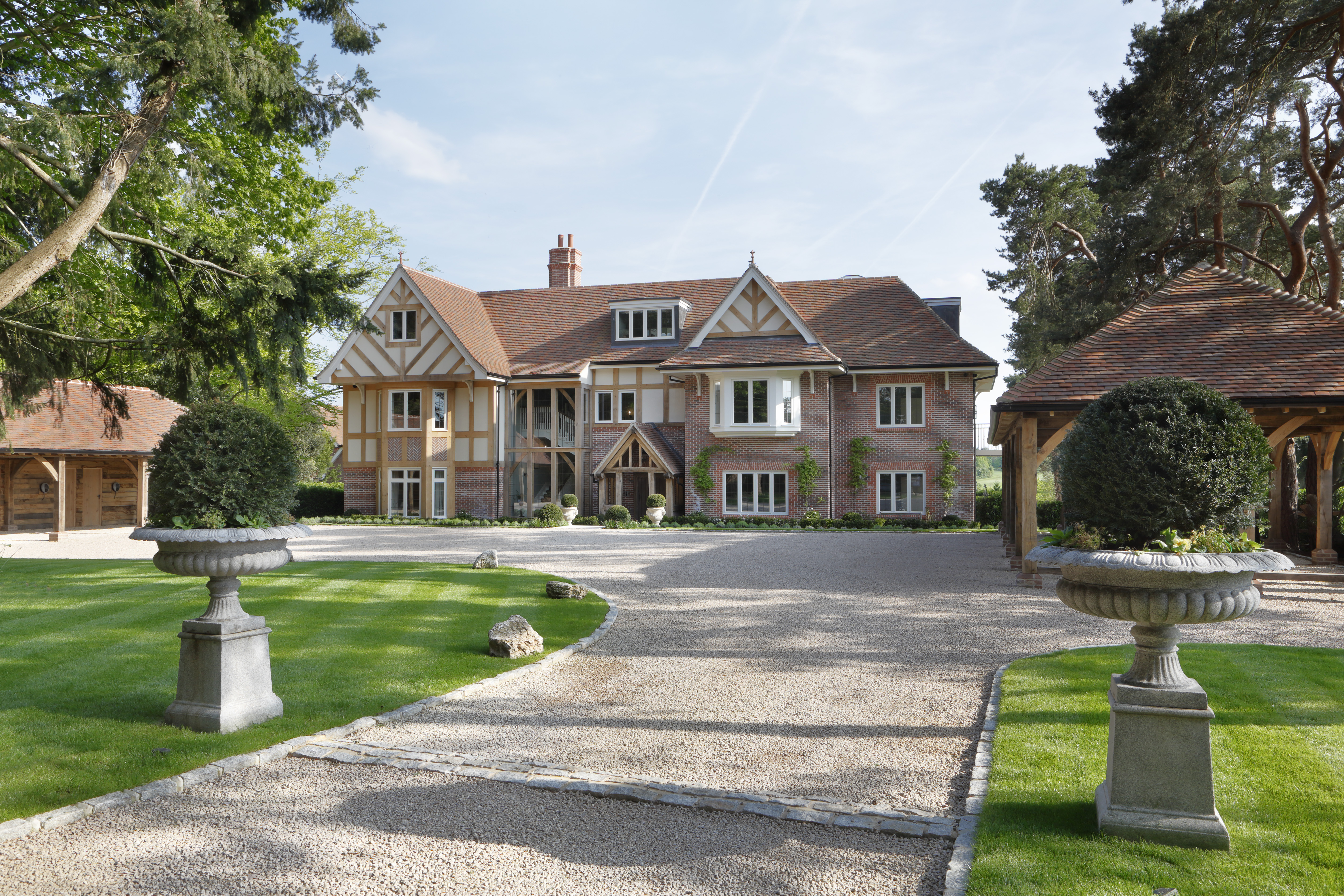
The go-to architecture, however, is Georgian. “Our brains are hard-wired to find symmetry appealing, which is what draws us to classical architecture,” says Philip Harvey, a senior partner at Property Vision, a prime buying agency. “Georgian style has enduring value, it doesn’t date, and it can be dressed with furniture from various eras.”
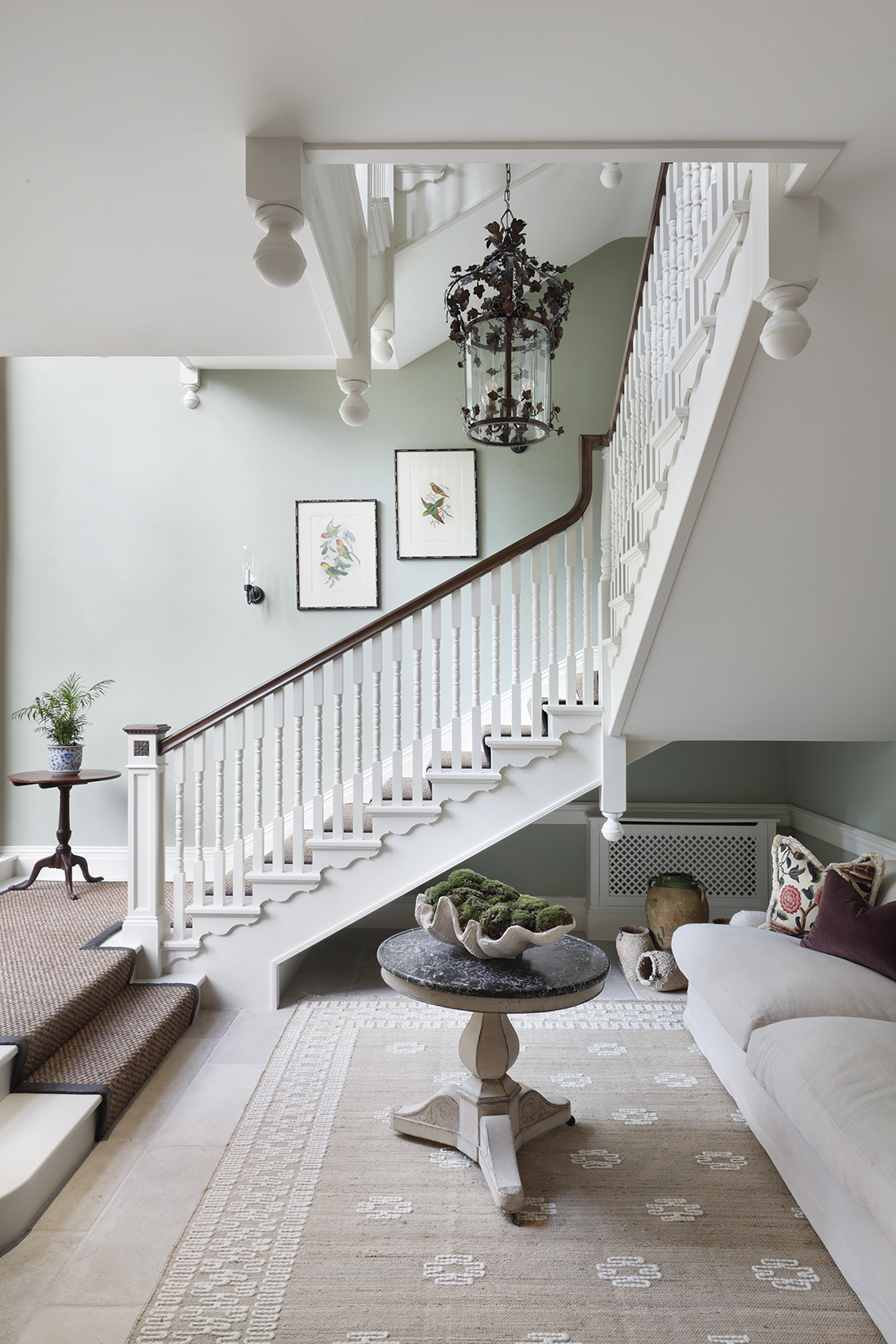
Some buyers sell genuine period homes to buy a modern fake in the same style, adds Oliver Custance Baker, head of Strutt & Parker’s Country House department. “They will only go down the new-build route if the home they’re buying looks old. They don’t want to lose the charm of period architectural styles, but they are eager for lower upkeep.”

Mock Georgian is also the safest option, according to many agents, if you are looking for resaleability among the widest possible pool of buyers. But don’t expect to be the only one. While the most authentic replicas could hold their own on their 100-acre estates, says Surrey-based buying agent Richard Winter, “on Surrey’s Crown Estate, mock Georgian houses sit cheek by jowl.
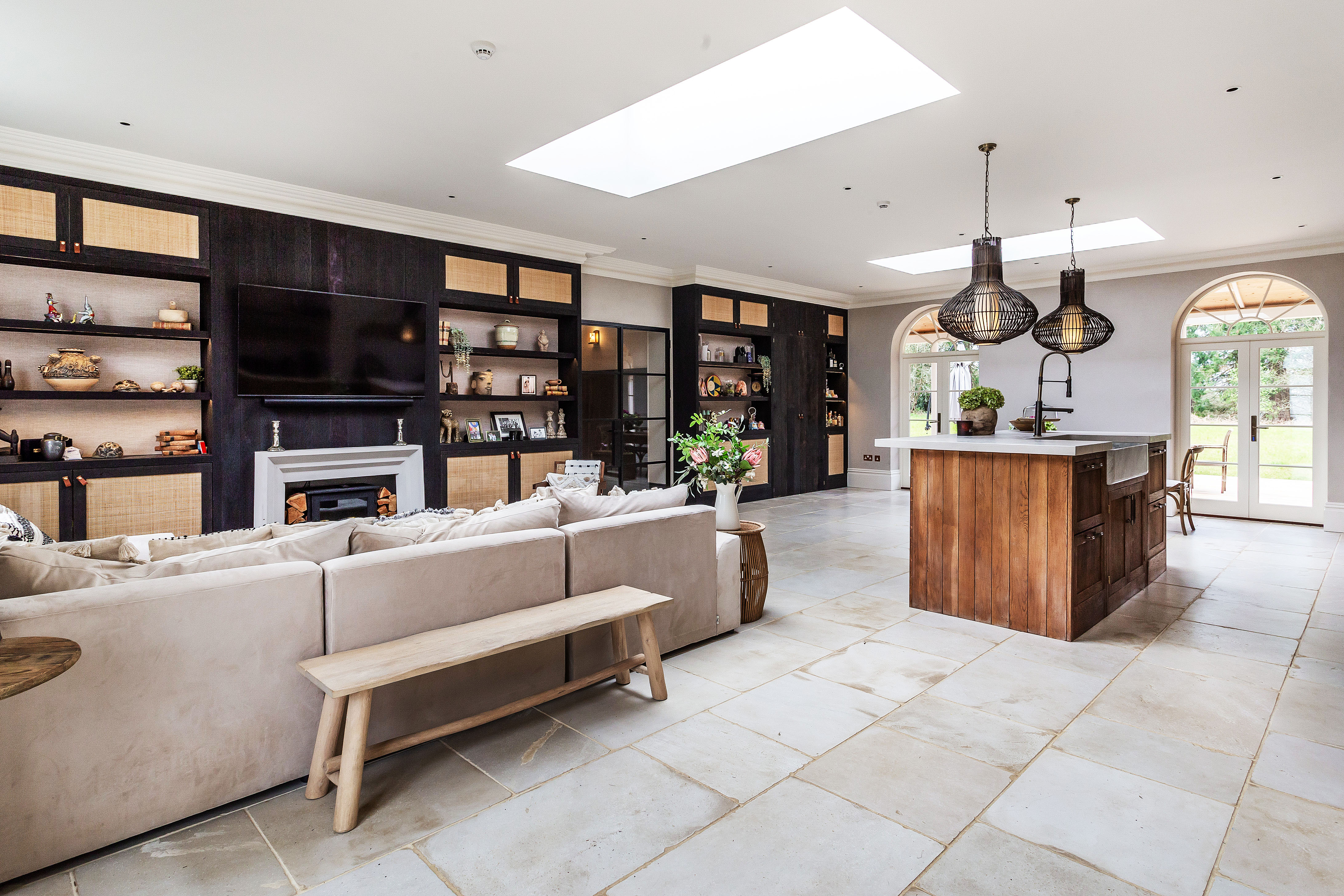
You’re likely to see a very similar house on either side of you.” Surrey — thanks to its rolling hills, great schools and proximity to London — is the heartland of the faux mansion set, and there’s nowhere quite like Wentworth, a private estate for the super-rich, for a modern take on Georgiana. It’s less a feeling of stepping back in time and more a day out in Disneyland. “You need to wear sunglasses; these houses are so shiny,” says Oliver Rodbourne, a partner in Knight Frank’s Country Department. “They are all similar architecturally, but they all try to outdo neighbouring houses with their six-star hotel-style amenities, including floating floors that turn into swimming pools and mirrored glass walls that clear to reveal a Ferrari. It’s all about how extraordinary, lavish and eccentric you can be with your design.”
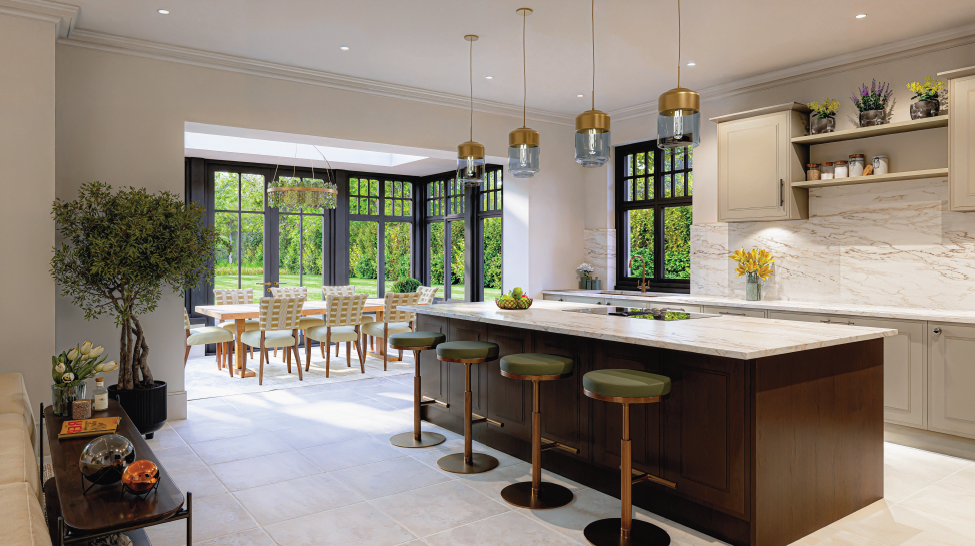
With only six per cent of all new homes in the UK designed by architects, according to RIBA — and the remainder created by major developers’ technical teams — standing out from your cookie-cutter neighbours is crucial.
At Camp End Manor, an award-winning 15,000 sq ft Regency-style mansion in St George’s Hill in Surrey, the wow factor lies in the solid stone staircase that wraps around 270 degrees. “The developer wanted to create something that made this house stand out, so the staircase was our big gesture as it’s the first thing you see when you enter,” says the house’s architect, Andrew Paulson, partner at LA London.
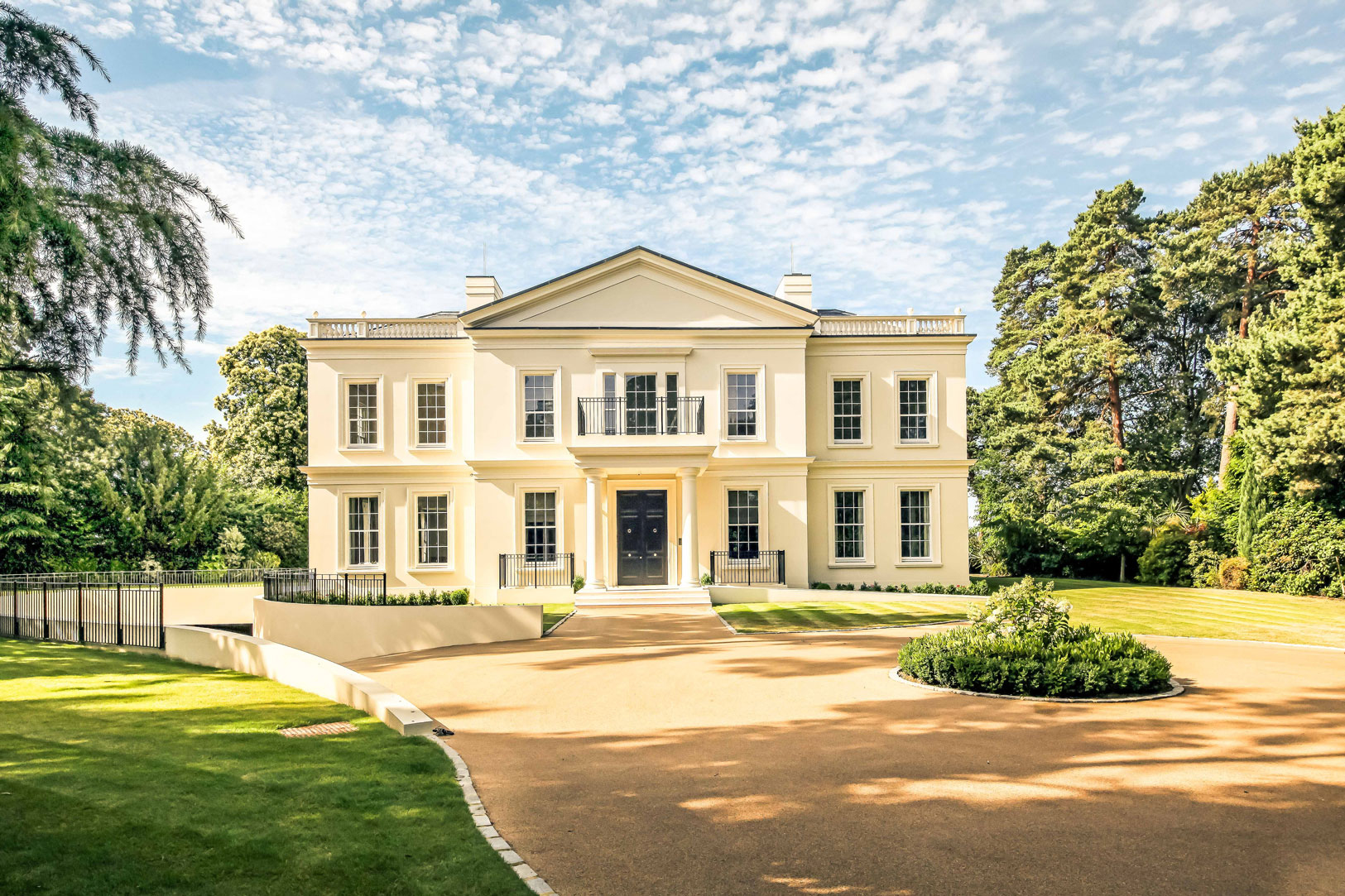
For inspiration, he turned to the master: Andrea Palladio, the 16th-century Italian Renaissance architect whose love of symmetry, proportion and temple-like façades has inspired house builders for centuries ever since.
“The house is based on nine squares, like a noughts and crosses board. The middle square houses the central staircase, and the other eight squares feed off it, so every room has a view across the staircase towards miles of countryside. It’s how Palladio did it,” explains Paulson of Camp End Manor, which went on sale for £25m upon completion in 2018.
Although most buyers are unlikely to know their Dorics from their Ionics, getting the finer details right, such as the width, height or number of columns, is essential, adds Paulson. “Even if you don’t know what it is, you can just instinctively tell when something isn’t right.”

Not everyone wanting modern luxury with a historic wrapping turns to Palladio, however. The Wildwood Estate in Surrey has five mansions — each set on private woodland plots of two to nine acres and priced from £4.85m–£6.65m — that replicate the area’s Arts & Crafts tradition. That means double-height windows and staircases, twisted chimneys and big overhangs on pitched roofs, explains Andrew Webb, managing director of the estate’s developer, Ashgrove Homes.
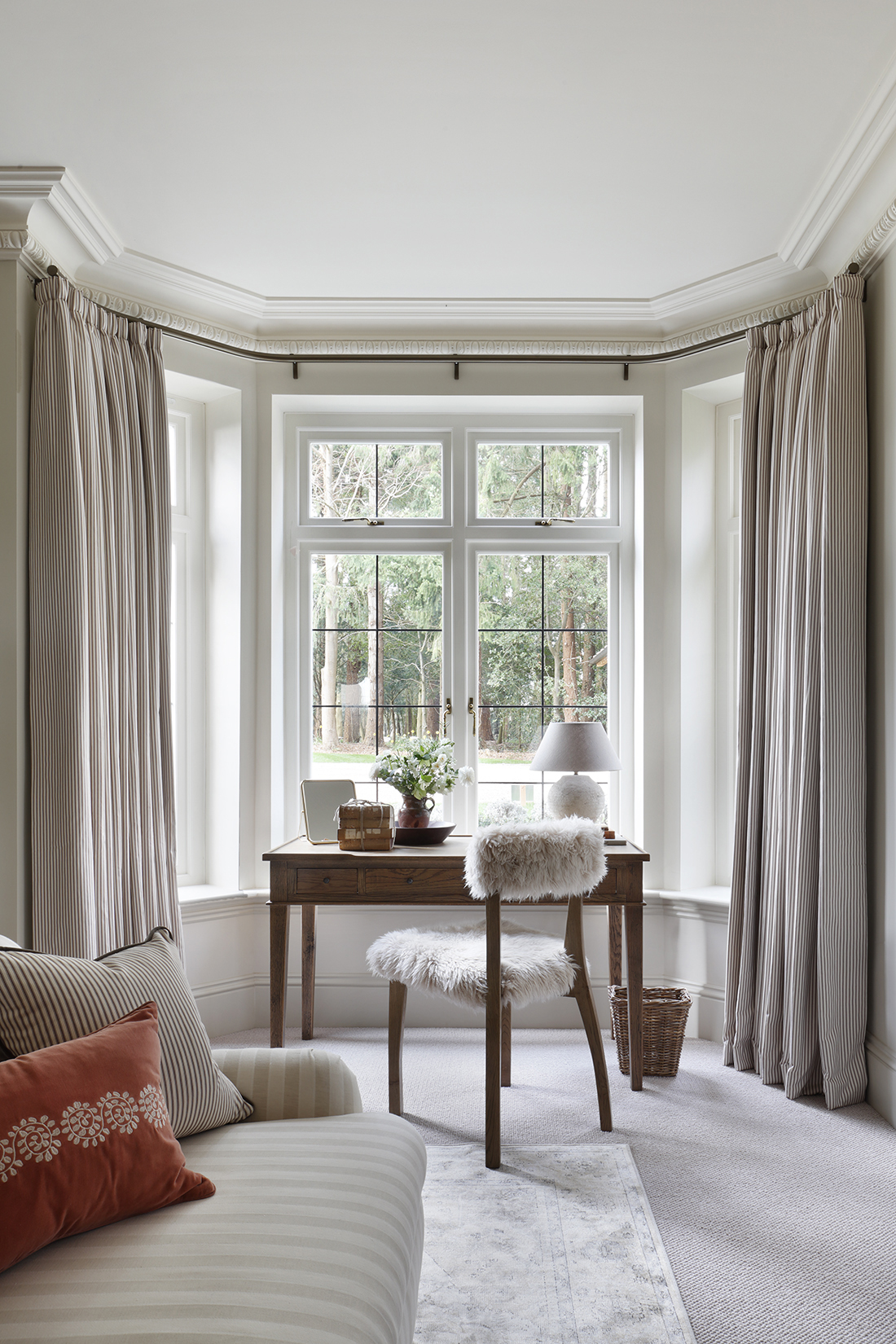
“The old style of house is appealing in this area. It harks back to a bygone age when life was simpler,” says Webb. “But if a high-net-worth individual buys an existing period house, they will probably want to gut it and renovate it with modern interiors, which is costly to do and a challenge if the house is listed. With a new house designed with historic character, you can have bigger rooms, smart home control, electric gates, great security and all the other things buyers want.”

Not that building Wildwood has been a walk in the park. It took 20 years just to get planning permission. “The idea is that buyers can have input into what it looks like internally, without us needing to go back to planning,” Webb adds. “A couple of potential buyers are looking at making their homes so highly energy efficient that they are almost off-grid.”
The bells, whistles and lifestyle choices may be different these days, but when it comes to how the wealthy want their country mansion to look, the old masters were spot on.



